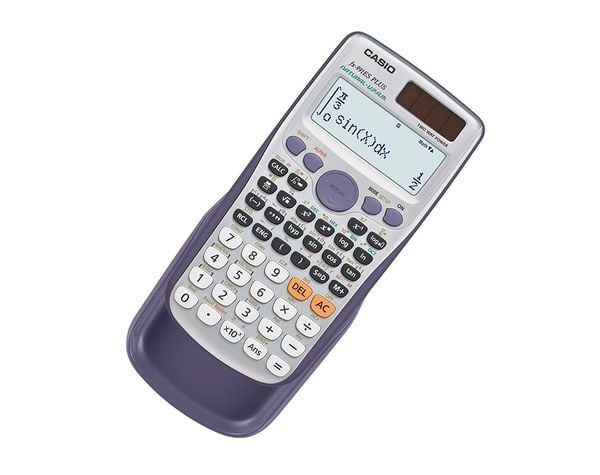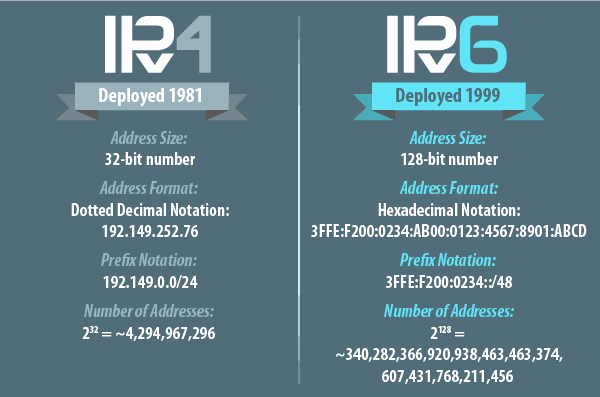IP Calculator
Ever wonder how many useable IPs are in a /24? Or what your network and broadcast addresses are? Colocation America’s IP Calculator will answer all your nerdy IP questions!
Here are some examples to use:
IPv4: 192.168.0.1/24 IPv6: 2002:0BD8::/32 Subnet mask: 192.0.2.0/255.255.255.0 Wildcard subnet mask: 192.0.2.0/0.0.0.255 IPv4 Range: 192.0.2.0-192.0.2.254 IPv6 Range: Currently our calculator doesn’t support IPv6 ranges, but it will soon!
When you’re entering a /X, make sure there’s no space inbetween the “/” and the IP Address. Happy Calculating!
If you're looking for some quick information for questions like "How many IPs are in a /24?" please click here!
Why Is an IP Range / Subnet Mask Calculator Useful?
If you ever tried to do some IP network calculations by hand you were probably in school and wanted to rip your hair out. It's tedious, time-consuming, and—frankly—boring. It would have been nice to have one of those old-school scientific calculators which also included an IP subnet calculator, right?

Ahh, memories....
Fortunately for you, Colocation America has your back with our IP range calculator suitable for all ages! Just plug in your IP range to figure out your subnet mask, IPv4/6 range, and the amount of usable IPs. Now, let's get into the nitty-gritty. The calculator is useful because it does the work for you. If you don't know, there are a total of 4,294,967,296 possible IP addresses in IPv4. That number jumps to over 300,000,000,000,000,000,000,000,000,000,000,000,000 in IPv6.  If you're buying a usable block of IPs for your business, it would be tedious to calculate all the things necessary for your networking purposes by hand or ledger. One of the most useful functions of our IP calulator is the ability to show you subnet information.
If you're buying a usable block of IPs for your business, it would be tedious to calculate all the things necessary for your networking purposes by hand or ledger. One of the most useful functions of our IP calulator is the ability to show you subnet information.
What Is a Subnet Mask Address and What's It Good For?
A subnet mask boils down to "masking" out the host bits of your IP leaving only the Network ID visible. It can also determine the size of a subnet and, if the IP address on a subnet is known, the subnet mask is used to determine where the endpoints of the subnet are. This involves a lot of binary math. You could use our calculator or do it the long way: An example of subnet IP address is as follow: a 255.255.255.252 subnet mask has a binary mask that is 11111111.11111111.11111111.11111100. The number of 0s a binary mask has is directly related to the subnet length. Continuing from the example, the subnet for IP address length of the subnet mask 255.255.255.252 is 2. When calculating subnets and subnet masks, there are special numbers that reoccur and remembering these numbers is essential. These numbers are 255, 254, 252, 248, 240, 224, 192, and 128.
These numbers are useful for IP networking and help determine where a subnet can be properly broken up into smaller subnets. For much more information on converting IP addresses from dotted decimal to binary and other IP calculations, please visit our very technical page here. So, you can do it that way—or simply plug in your IP address or IP range into our calculator and make it much easier on yourself. Trust us, using an IP network calculator complete with a subnet mask calculator will save you so much time. After all, we're here to help!
Quick Hits: IP Networking Chart
If you're looking for quick information before calculating your block of IPs, please view the charts below. Class A IP Addresses Network Bits Subnet Mask Number of Subnets Number of Hosts
| Network Bits | Subnet Mask | Number of Subnets | Number of Hosts |
| /8 | 255.0.0.0 | 0 | 16777214 |
| /9 | 255.128.0.0 | 2 (0) | 8388606 |
| /10 | 255.192.0.0 | 4 (2) | 4194302 |
| /11 | 255.224.0.0 | 8 (6) | 2097150 |
| /12 | 255.240.0.0 | 16 (14) | 1048574 |
| /13 | 255.248.0.0 | 32 (30) | 524286 |
| /14 | 255.252.0.0 | 64 (62) | 262142 |
| /15 | 255.254.0.0 | 128 (126) | 131070 |
| /16 | 255.255.0.0 | 256 (254) | 65534 |
| /17 | 255.255.128.0 | 512 (510) | 32766 |
| /18 | 255.255.192.0 | 1024 (1022) | 16382 |
| /19 | 255.255.224.0 | 2048 (2046) | 8190 |
| /20 | 255.255.240.0 | 4096 (4094) | 4094 |
| /21 | 255.255.248.0 | 8192 (8190) | 2046 |
| /22 | 255.255.252.0 | 16384 (16382) | 1022 |
| /23 | 255.255.254.0 | 32768 (32766) | 510 |
| /24 | 255.255.255.0 | 65536 (65534) | 254 |
| /25 | 255.255.255.128 | 131072 (131070) | 126 |
| /26 | 255.255.255.192 | 262144 (262142) | 62 |
| /27 | 255.255.255.224 | 524288 (524286) | 30 |
| /28 | 255.255.255.240 | 1048576 (1048574) | 14 |
| /29 | 255.255.255.248 | 2097152 (2097150) | 6 |
| /30 | 255.255.255.252 | 4194304 (4194302) | 2 |
Class B IP Addresses Network Bits Subnet Mask Number of Subnets Number of Hosts
| Network Bits | Subnet Mask | Number of Subnets | Number of Hosts |
| /16 | 255.255.0.0 | 0 | 65534 |
| /17 | 255.255.128.0 | 2 (0) | 32766 |
| /18 | 255.255.192.0 | 4 (2) | 16382 |
| /19 | 255.255.224.0 | 8 (6) | 8190 |
| /20 | 255.255.240.0 | 16 (14) | 4094 |
| /21 | 255.255.248.0 | 32 (30) | 2046 |
| /22 | 255.255.252.0 | 64 (62) | 1022 |
| /23 | 255.255.254.0 | 128 (126) | 510 |
| /24 | 255.255.255.0 | 256 (254) | 254 |
| /25 | 255.255.255.128 | 512 (510) | 126 |
| /26 | 255.255.255.192 | 1024 (1022) | 62 |
| /27 | 255.255.255.224 | 2048 (2046) | 30 |
| /28 | 255.255.255.240 | 4096 (4094) | 14 |
| /29 | 255.255.255.248 | 8192 (8190) | 6 |
| /30 | 255.255.255.252 | 16384 (16382) | 2 |
Supernetting (CIDR) Chart CIDR – Classless Inter-Domain Routing. Note: The Number of Class C networks must be contiguous. For example, 192.169.1.0/22 represents the following block of addresses: 192.169.1.0, 192.169.2.0, 192.169.3.0 and 192.169.4.0. Class C CIDR Block Supernet Mask Number of Class C Addresses Number of Hosts
| CIDR Block | Supernet Mask | Number of Class C Addresses | Number of Hosts |
| /14 | 255.252.0.0 | 1024 | 262144 |
| /15 | 255.254.0.0 | 512 | 131072 |
| /16 | 255.255.0.0 | 256 | 65536 |
| /17 | 255.255.128.0 | 128 | 32768 |
| /18 | 255.255.192.0 | 64 | 16384 |
| /19 | 255.255.224.0 | 32 | 8192 |
| /20 | 255.255.240.0 | 16 | 4096 |
| /21 | 255.255.248.0 | 8 | 2048 |
| /22 | 255.255.252.0 | 4 | 1024 |
| /23 | 255.255.254.0 | 2 | 512 |
